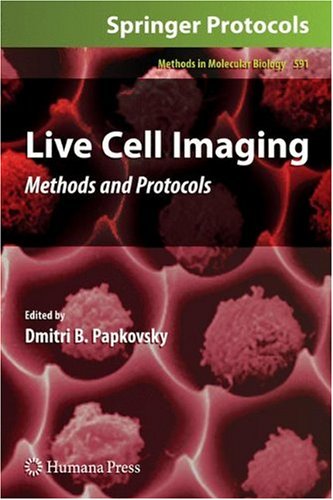

Most ebook files are in PDF format, so you can easily read them using various software such as Foxit Reader or directly on the Google Chrome browser.
Some ebook files are released by publishers in other formats such as .awz, .mobi, .epub, .fb2, etc. You may need to install specific software to read these formats on mobile/PC, such as Calibre.
Please read the tutorial at this link. https://ebooknice.com/page/post?id=faq
We offer FREE conversion to the popular formats you request; however, this may take some time. Therefore, right after payment, please email us, and we will try to provide the service as quickly as possible.
For some exceptional file formats or broken links (if any), please refrain from opening any disputes. Instead, email us first, and we will try to assist within a maximum of 6 hours.
EbookNice Team

Status:
Available0.0
0 reviewsNow a routine tool in biomedical and life science research, live cell imaging has made major progress enabling this core biochemical, cell, and molecular biology technique to become even more powerful, versatile, and affordable. In Live Cell Imaging: Methods and Protocols, a panel of expert contributors provide a comprehensive compendium of experimental approaches to live cell imaging in the form of several overview chapters followed by representative examples and case studies covering different aspects of the most current methodology. By examining a range of state-of-the-art protocols extensively validated in complex biological studies, this volume highlights new experimental and instrumental opportunities and helps researchers to select appropriate imaging methods for their specific biological questions and measurement tasks. Written in the highly successful Methods in Molecular Biology™ series format, chapters include introductions to their respective topics, lists of the necessary materials and reagents, step-by-step, readily reproducible laboratory protocols, and notes on troubleshooting and avoiding known pitfalls.
Authoritative and cutting-edge, Live Cell Imaging: Methods and Protocols promises to contribute greatly to the further development and dissemination of this fundamentally important technology which spans across many disciplines including molecular and cell biology, chemistry, physics, optics, engineering, cell physiology, and medicine.